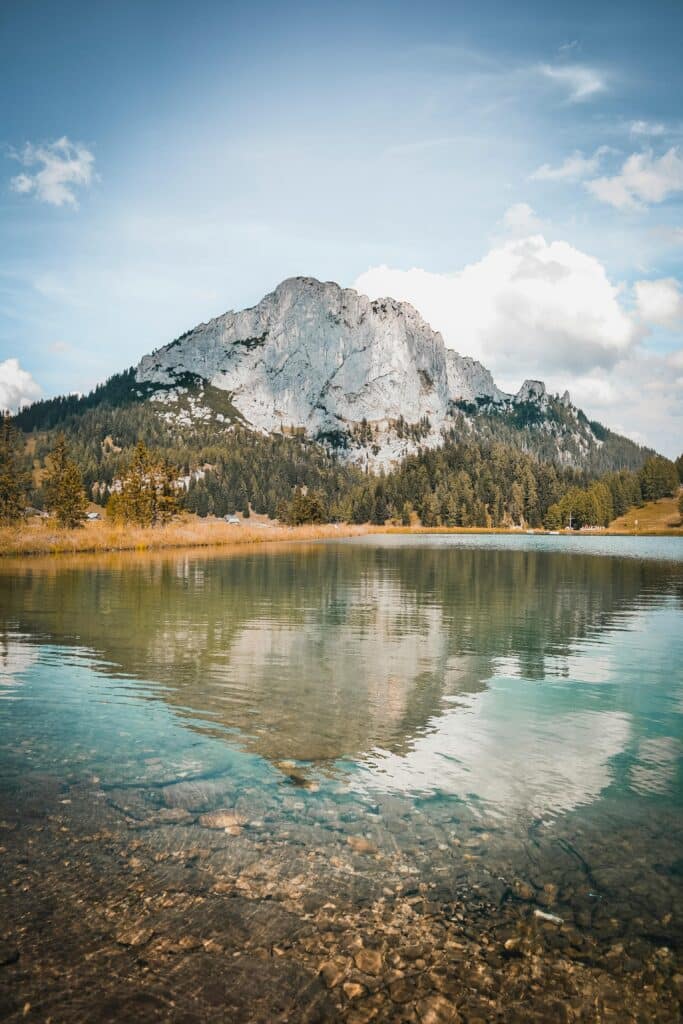You’ve been dreaming of tropical beaches, lush rainforests, and vibrant wildlife, and Costa Rica is the destination that promises to fulfill those dreams. In this article, we will take you on an exciting journey through the top 10 must-see attractions in Costa Rica. From the magnificent Arenal Volcano to the breathtaking Monteverde Cloud Forest, prepare to be mesmerized by the country’s stunning natural beauty and unforgettable experiences it has to offer. So grab your sunscreen and get ready to explore this tropical paradise like never before!
Arenal Volcano National Park
History and formation of Arenal Volcano
Arenal Volcano National Park is located in the northwestern part of Costa Rica and is home to the iconic Arenal Volcano. The volcano has a rich history and played a significant role in the country’s geological past. Arenal Volcano was once considered dormant until July 29, 1968 when it suddenly erupted, causing widespread devastation in the surrounding areas. Since then, it has been one of the most active volcanoes in the world.
Activity and visibility of the volcano
The Arenal Volcano is known for its frequent eruptions and provides visitors with a unique opportunity to witness the raw power of nature. Although the volcano’s activity level has decreased in recent years, there is still a chance to see steam and smoke rising from its summit. At night, the volcano lights up with glowing lava flows, creating a mesmerizing sight that is truly unforgettable.
The surrounding natural beauty
Aside from the awe-inspiring volcano, Arenal Volcano National Park boasts breathtaking natural beauty. The park is home to a diverse range of ecosystems, including lush rainforests, hot springs, and serene lakes. The surrounding landscape is adorned with vibrant flora and fauna, making it a paradise for nature lovers and photographers alike.
Variety of plants and animals in the park
Arenal Volcano National Park is a haven for biodiversity. The park is home to abundant wildlife, including howler monkeys, sloths, toucans, and countless species of birds. The lush rainforests are teeming with plant life, including orchids, bromeliads, and towering trees that provide shelter for various animals. Exploring the park’s trails gives visitors the chance to encounter these incredible creatures in their natural habitat.
Things to do in Arenal Volcano National Park
There are plenty of activities to enjoy in Arenal Volcano National Park. Hiking is a popular choice, with trails that lead visitors through the park’s diverse landscapes, offering stunning views of the volcano and surrounding areas. For the more adventurous, there are opportunities for zip-lining, white-water rafting, and canyoning, allowing visitors to experience the adrenaline rush of exploring the park’s natural wonders. Additionally, the region is famous for its hot springs, which provide the perfect place to relax and unwind after a day of exploration.
Monteverde Cloud Forest Reserve

Diversity of flora and fauna
The Monteverde Cloud Forest Reserve is renowned for its incredible diversity of flora and fauna. The reserve is shrouded in mist and boasts a unique ecosystem that supports a wide variety of plant life. As visitors explore the trails, they will encounter a stunning array of orchids, bromeliads, and ferns, among other plant species. The cloud forest is also home to over 400 species of birds, including the resplendent quetzal, making it a birdwatcher’s paradise.
Unique cloud forest ecosystem
The cloud forest ecosystem found in Monteverde is truly extraordinary. The combination of high altitude, moisture, and temperature create the perfect conditions for a dense layer of clouds to form within the forest. These clouds deliver a continuous water supply, resulting in abundant vegetation and a thriving ecosystem. The mist also creates a mystical atmosphere, adding to the allure of the reserve.
Popular activities in Monteverde
Monteverde offers a wide range of activities for visitors to enjoy. One of the most popular activities is canopy tour, where visitors can zip-line through the treetops, providing a unique perspective of the cloud forest. Guided hikes are also available, allowing visitors to learn about the forest’s ecology and spot wildlife along the way. For those seeking an adrenaline rush, there are opportunities for bungee jumping and rope swings, providing a thrilling experience amidst the lush vegetation.
Conservation and education efforts
Monteverde Cloud Forest Reserve is dedicated to conserving the unique ecosystem and educating visitors about the importance of biodiversity. The reserve actively participates in research programs and sustainable practices to ensure the protection of the cloud forest. Visitors have the opportunity to learn about conservation efforts through guided tours and educational exhibits, gaining a deeper understanding of the delicate balance that exists within the cloud forest.
Manuel Antonio National Park
Wildlife spotting opportunities
Manuel Antonio National Park is famous for its abundant wildlife and provides visitors with ample opportunities for wildlife spotting. The park is home to several species of monkeys, including howler monkeys, squirrel monkeys, and the endangered mono titi (also known as the Central American squirrel monkey). Other residents of the park include sloths, coatimundis, and a wide variety of colorful birds. Exploring the park’s trails with a knowledgeable guide enhances the chances of spotting these incredible creatures.

The stunning beaches within the park
One of the main attractions of Manuel Antonio National Park is its stunning beaches. The park features pristine white sand beaches framed by lush green vegetation and crystal-clear waters. Playa Manuel Antonio, the park’s main beach, is a favorite among visitors, offering a picturesque setting for sunbathing, swimming, and picnicking. Playa Espadilla Sur is another beautiful beach within the park, known for its pristine beauty and excellent surf conditions.
Hiking trails
Manuel Antonio National Park features several well-maintained hiking trails that allow visitors to explore the park’s diverse landscapes. The trails wind through lush forests, leading to breathtaking viewpoints and secluded beaches. A favorite trail among visitors is the Cathedral Point Trail, which offers panoramic views of the coastline and the iconic Punta Catedral rock formation. Along the trails, visitors may encounter wildlife and learn about the park’s unique ecosystems from knowledgeable guides.
Tips for visiting Manuel Antonio National Park
To make the most of your visit to Manuel Antonio National Park, it is recommended to arrive early in the morning to avoid crowds and have better wildlife spotting opportunities. It is also important to bring sunscreen, insect repellent, and plenty of water. Additionally, swimming is only allowed in designated areas, and visitors are advised to follow the park’s guidelines to ensure the preservation of this natural treasure.
Tortuguero National Park
The importance of the region for turtle nesting
Tortuguero National Park is a vital nesting ground for several species of sea turtles, including the endangered green turtle and the critically endangered hawksbill turtle. The park’s beaches provide a safe haven for these ancient reptiles to lay their eggs, and visitors have the opportunity to witness this incredible natural phenomenon. Guided night tours are available during nesting season, offering a chance to observe turtles laying their eggs or witness hatchlings making their way to the sea.
Exploring the park’s waterways
Tortuguero National Park is renowned for its intricate system of canals, rivers, and lagoons. Exploring the park’s waterways by boat or kayak offers a unique perspective of the ecosystem and provides opportunities for spotting wildlife such as caimans, river otters, and various bird species. The lush vegetation along the water’s edge adds to the beauty of the experience, creating a surreal environment that feels like a hidden paradise.

Wildlife diversity
Tortuguero National Park is home to a rich variety of wildlife. Aside from the sea turtles, visitors may encounter spider monkeys, sloths, toucans, and a vast array of bird species. The park’s marshy wetlands are teeming with life, and exploring the trails allows visitors to witness the intricate interactions between the park’s residents. The sounds of howler monkeys echoing through the forest and the flashes of vibrant bird feathers create an unforgettable wildlife experience.
Responsible tourism in Tortuguero National Park
Tortuguero National Park places a strong emphasis on responsible tourism. Visitors are encouraged to follow the park’s rules and guidelines to minimize their impact on the fragile ecosystem. The use of biodegradable sunscreen and insect repellent is recommended to protect the park’s flora and fauna. Additionally, supporting local eco-friendly lodges and tour operators helps contribute to the conservation efforts within the park, ensuring its preservation for future generations.
Corcovado National Park
Fact about being one of the world’s most biodiverse places
Corcovado National Park is internationally recognized as one of the most biodiverse places on Earth. The park’s extraordinary biological richness is attributed to its unique geographical location, topography, and climate. It is estimated that the park contains 2.5% of the planet’s biodiversity, making it a must-visit destination for nature enthusiasts and researchers alike.
Hiking and camping
Corcovado National Park offers a network of hiking trails that wind through diverse ecosystems, including dense rainforests and pristine beaches. The park’s trails cater to all levels of hikers, from easy scenic walks to challenging multi-day treks. Camping is permitted in designated areas within the park, allowing visitors to immerse themselves in the wilderness and experience the magic of sleeping under a canopy of stars.
Wildlife watching opportunities
Corcovado National Park is a haven for wildlife, and visitors have the opportunity to observe a wide variety of creatures in their natural habitat. The park is home to several endangered species, including jaguars, tapirs, and scarlet macaws. Guided tours led by knowledgeable guides enhance the chances of spotting these elusive animals and provide valuable insights into their behavior and conservation.

Travel tips and best times to visit
To make the most of your visit to Corcovado National Park, it is advisable to hire a licensed guide who can navigate the trails and provide insights into the park’s flora and fauna. The rainy season (May to November) offers the best opportunities for wildlife sightings but be prepared for wet weather. It is also important to pack essentials such as sturdy footwear, insect repellent, and lightweight clothing to ensure a comfortable and enjoyable experience.
La Paz Waterfall Gardens
Introduction to the natural and wildlife sanctuary
La Paz Waterfall Gardens is a natural and wildlife sanctuary nestled in the heart of the Costa Rican rainforest. The sanctuary offers a perfect blend of natural beauty, adrenaline-pumping activities, and educational exhibits. Visitors can explore the lush trails, admire towering waterfalls, and encounter a wide range of Costa Rican wildlife in an environment that prioritizes the animals’ welfare and conservation.
Exploring the gardens and trails
La Paz Waterfall Gardens features a series of well-maintained trails that meander through the lush rainforest, leading visitors to jaw-dropping waterfalls and scenic viewpoints. As you follow the trails, keep an eye out for colorful birds, playful monkeys, and vibrant butterflies that call the gardens home. The sound of rushing water and the mist generated by the waterfalls create a serene and enchanting atmosphere.
Attractions within the park
In addition to its stunning natural surroundings, La Paz Waterfall Gardens offers various attractions that provide visitors with a unique and memorable experience. The park features butterfly and hummingbird gardens, allowing visitors to witness these delicate creatures up close. The serpentarium showcases a variety of snakes, educating visitors about their role in the ecosystem. The park also boasts a large cat exhibit, where visitors can observe majestic jaguars, pumas, and other big cats in a spacious and natural environment.
Accessibility and best times to visit
La Paz Waterfall Gardens is easily accessible from San Jose, making it a popular day trip destination for both locals and tourists. The park provides a range of amenities, including restaurants and restrooms, to ensure a comfortable visit. To avoid crowds, it is recommended to arrive early in the morning. The park is also less crowded during the weekdays. The overall experience is enhanced during the driest months (December to April) when weather conditions are more favorable.
Poás Volcano National Park

Overview of the active crater
Poás Volcano National Park is home to one of the world’s most accessible active volcanoes. The park’s main attraction is the Poás Volcano, which showcases a stunning sulfuric lake within its active crater. The volcano has experienced periodic eruptions throughout history, resulting in the formation of its unique geological features. Visitors have the opportunity to witness the imposing volcanic landscape and experience the power of nature up close.
Geology behind its sulfuric lake
The sulfuric lake within Poás Volcano’s active crater is a mesmerizing sight. The lake’s brilliant turquoise color is a result of the minerals present in its waters. The high acidity of the lake caused by sulfuric gases creates ever-changing hues, ranging from vibrant blues to emerald greens. The combination of this otherworldly lake and the surrounding volcanic landscape form a surreal and awe-inspiring vista.
Flora and fauna of the national park
Despite the harsh volcanic environment, Poás Volcano National Park is home to a surprising variety of plant and animal species. The park’s high altitude and cool climate provide a suitable habitat for unique vegetation, including ferns, bromeliads, and orchids. The cloud forest surrounding the volcano teems with bird species, including the resplendent quetzal and numerous hummingbirds. Visiting the park offers a rare opportunity to witness the adaptability of life amidst volcanic activity.
Visitor guidelines and safety
When visiting Poás Volcano National Park, it is important to prioritize safety and follow the park’s guidelines. Due to the volcano’s activity, certain areas may be temporarily closed to visitors. It is also recommended to wear appropriate clothing and footwear for the potentially cool and damp conditions. Visitors should be cautious of gas emissions, as they can be harmful and irritating to the respiratory system. As with any volcanic area, it is advisable to check for any updates and advice from park authorities before visiting.
Guanacaste’s Beaches
Highlighting the region’s best beaches
Guanacaste, located in the northwestern part of Costa Rica, is famous for its stunning beaches that line the Pacific coastline. The region boasts a diverse range of beaches that cater to various interests and preferences. From secluded and untouched stretches of coastline to vibrant beach towns buzzing with activities, Guanacaste offers a beach experience for every type of traveler.
Overview of surfable waves
Guanacaste is a paradise for surfers of all levels. The region is known for its consistent wave conditions, making it a favorite among both beginners and experienced surfers alike. Beaches such as Tamarindo, Playa Grande, and Playa Avellanas are renowned for their world-class surf breaks and provide the perfect backdrop for riding the waves. Surf schools and board rentals are readily available, ensuring that everyone can experience the thrill of catching a wave.
Snorkeling and diving spots
Guanacaste is not only famous for its surf, but also for its incredible snorkeling and diving opportunities. The region boasts several pristine marine reserves, including the Catalina Islands and the Santa Rosa National Park, which are teeming with vibrant coral reefs and marine life. Snorkelers and divers can explore underwater caves, swim with schools of tropical fish, and encounter majestic sea turtles and rays. The crystal-clear waters and thriving underwater ecosystems make Guanacaste a must-visit destination for underwater enthusiasts.
Recommendations for beachfront accommodations
For those seeking a beachfront vacation, Guanacaste offers a plethora of accommodations to suit every budget and preference. From luxurious all-inclusive resorts overlooking the ocean to charming boutique hotels nestled amidst the lush landscapes, there are options for everyone. Popular beach towns such as Tamarindo and Playas del Coco offer a vibrant atmosphere, with numerous restaurants, bars, and shops within walking distance from the beach. Whether you prefer lounging by the pool or listening to the waves crashing on your doorstep, Guanacaste has accommodation options that will make your beach getaway unforgettable.
Cahuita National Park
Experiencing Caribbean flora and fauna
Cahuita National Park, located on Costa Rica’s Caribbean coast, is a tropical paradise known for its rich biodiversity. The park is characterized by its stunning white sand beaches and dense rainforests, offering visitors a unique opportunity to experience the diverse flora and fauna of the region. As you wander through the park’s trails, you will encounter towering trees, vibrantly colored flowers, and a symphony of bird songs that create a truly immersive experience.
Overview of the coral reef
One of the major highlights of Cahuita National Park is its coral reef, considered one of the most extensive and well-developed reefs in Costa Rica. Snorkelers and divers can explore the reef’s vibrant underwater world, encountering a plethora of tropical fish, sea turtles, and even the occasional reef shark. The park’s coral reef is a testament to the importance of protecting marine ecosystems and serves as a reminder of the incredible diversity found beneath the surface of the Caribbean Sea.
Marine life in Cahuita National Park
Cahuita National Park is home to a wide array of marine life, making it a snorkeler’s paradise. Along with the colorful coral reef, visitors can spot a variety of fish species, including parrotfish, surgeonfish, and angelfish. Snorkelers may also encounter stingrays gliding gracefully across the sandy seabed, and lucky visitors may even spot a majestic manatee or a playful pod of dolphins. Exploring the park’s underwater world provides a profound appreciation for the delicate balance of marine ecosystems.
Guidelines for snorkeling and scuba diving
To preserve Cahuita National Park’s coral reef and marine life, certain guidelines must be followed while snorkeling and scuba diving. Visitors are advised to use reef-safe sunscreen and avoid touching or stepping on the coral to prevent damage. It is essential to respect the park’s rules and regulations, including not feeding or disturbing the marine life. Snorkelers and divers should also be mindful of their own safety and the presence of strong currents, as well as ensuring they have the necessary skills and equipment for a safe underwater adventure.
Cerro Chirripó National Park
Trekking Costa Rica’s tallest peak
Cerro Chirripó National Park is home to Costa Rica’s tallest peak, the magnificent Cerro Chirripó. Embarking on the challenging trek to the summit is a bucket-list adventure for many outdoor enthusiasts. The climb offers breathtaking views of the surrounding landscapes, including lush valleys, cloud forests, and on clear days, even the Pacific Ocean and the Caribbean Sea. Standing on the summit of Cerro Chirripó is a rewarding experience that provides a sense of accomplishment and a unique perspective on the stunning beauty of Costa Rica.
Overview of the challenging hike
Ascending Cerro Chirripó is a physically demanding endeavor that requires careful preparation and planning. The hike to the summit involves traversing rugged and steep terrain, including rocky slopes and dense cloud forests. The trek typically takes two to three days, with overnight stays at the park’s backcountry shelters. Hikers should be prepared for changing weather conditions, including low temperatures and strong winds. Proper hiking gear, physical fitness, and a sense of adventure are essential for a successful and enjoyable journey.
Flora and fauna along the trail
As hikers make their way to the summit of Cerro Chirripó, they will encounter a rich diversity of plant and animal life. The trail winds through several distinct ecosystems, including cloud forests, páramo grasslands, and elfin forests. These unique habitats are home to a wide variety of flora, including rare orchids, bromeliads, and ancient oak trees. The park is also a habitat for numerous bird species, such as the resplendent quetzal and the fiery-throated hummingbird. The chance to witness the park’s incredible biodiversity is a captivating aspect of the Cerro Chirripó trek.
Tips for safety and preparation
Embarking on the Cerro Chirripó trek requires careful planning and preparation. It is recommended to make reservations in advance, as only a limited number of hikers are permitted on the trail each day. Hiking permits can be obtained through the park’s official website. Hikers should be physically fit and acclimatize to the high altitude before beginning the trek. Essential gear, including sturdy hiking boots, warm clothing, and a reliable backpack, is crucial for a safe and comfortable journey. It is also recommended to hire a local guide who can provide valuable insights and ensure a smooth and enjoyable experience on the trail.
In conclusion, Costa Rica is a treasure trove of natural wonders, and exploring its national parks and attractions provides visitors with a profound appreciation for the country’s rich biodiversity and stunning landscapes. From the active volcanoes in Arenal Volcano National Park to the underwater wonders in Tortuguero National Park, each destination offers a unique and unforgettable experience. Whether you are an adventure seeker, a wildlife enthusiast, or simply someone looking to unwind amidst nature’s beauty, Costa Rica’s national parks are waiting to welcome you with open arms.








0 Comments